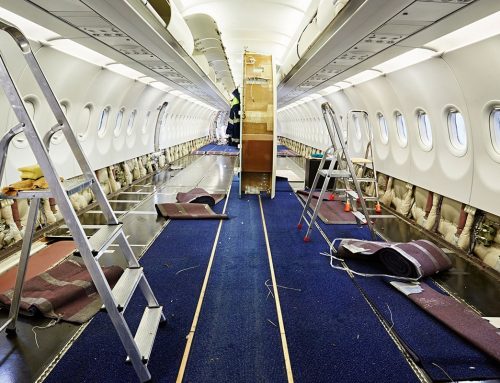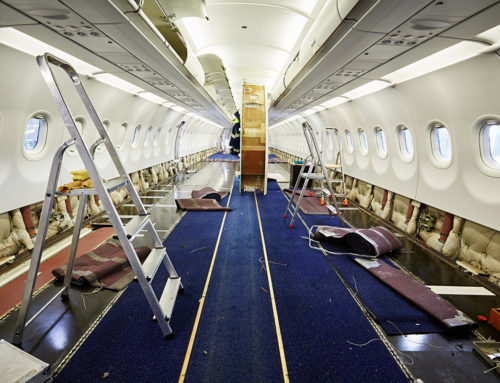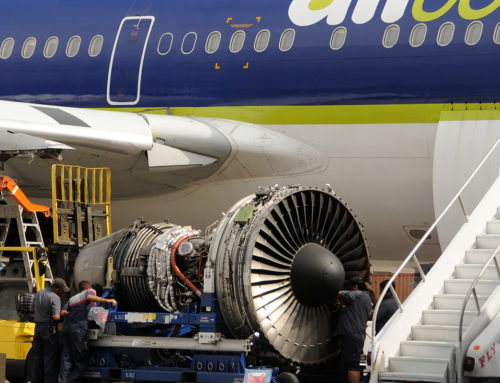Desert parking for commercial aircrafts

NAAI • MARCH 1, 2020
In fact, every fifth commercial aircraft that is temporarily or permanently not used or at the end of its life, is sent to the desert parking slot. The reasons, why thousands of them are parked in such an area are that this cheaper and of course dry enough, so the planes do not rust.
Nowadays all major commercial aircraft manufacturers are producing at full speed, as air traffic is booming in almost every part of the world. The result of this trend is that approximately 20% of the airline fleets is parked permanently – mostly in the desert.
Increased five times since 1990
Back in 1990, the number of commercial aircraft parked in desert parking lots was less than 500, mainly in the United States. This number increased by a factor of five to almost 2500 aircraft in the years 2015 and 2016. Particularly interesting about these parking figures is that the significant increase can be observed especially amongst small regional jets as well as amongst long-haul aircraft.
Accordingly, there were only very few regional jets in the desert in 1990. These days, nearly six percent of the global fleet of these aircraft is parked in the desert. A similar picture is presented in the case of large long-haul aircraft. In 1990, less than 50 were permanently parked. Today there are more than 1000 or 20 percent of the world fleet.
An interesting fact is that the number of planes has been considerably reduced over the last few years among jets in sizes ranging from 140 to 200 passengers (e.g. Airbus A-320, Boeing 737). A reason for this lies in the fact that these aircraft types carry most of today’s traffic.
The diverse advantages of desert parking lots
There are many reasons why aircraft are mainly parked on desert parking lots. The most important is the predominantly hot and dry climate, which prevents corrosion of the planes. Aircraft can be parked for very long periods of time without being damaged. Another advantage is the availability of huge areas at comparatively low parking fees, as airlines are often the only users of their old aircraft.
Consequently, the aircraft can be parked for a very long time without being damaged. Another advantage is the availability of space at relatively low parking fees, as airlines are often the only users of their old aircraft.
Finally, there is usually a functioning infrastructure. Starting with the availability of runways where the aircraft can then easily reach their permanent parking place.
In the event that an aircraft is ready to be scrapped, all usable components must be carefully dismantled, packed and shipped. Afterwards, the remaining aircraft parts can be dismantled by type of metal and sent for recycling.
It all began with the American Air Force
In times of peace the desert parking lots for military aircraft became more and more necessary. For instance, after the end of the Korean War, around 5000 military aircraft were parked at Litchfield Park in Arizona. By now, the vast majority of those have been scrapped. The number of newer aircraft entering such desert parking lots is far lower, since only a few military aircraft are currently produced. Nevertheless, there are still desert parking lots where up to 2500 military and also civil aircraft are parked.
Despite the fall in oil prices, airlines continue to buy the most modern machines
The average life expectancy of commercial aircraft is 30 years. However, more and more aircrafts are now parked on desert parking lots after just eight to ten years. And this despite of the massive drop in fuel prices, which for many years encouraged airlines to order more and more fuel-saving aircrafts.
According to the airlines, there are two main reasons for this trend: The first is the fuel savings that can now be achieved. The new planes have newer engines and more advanced aerodynamics. This allows significant fuel savings, which makes it more reasonable to send the older, inherently fuel-efficient aircraft to the desert.
Another reason is the quality and reliability of all on-board equipment, which has improved remarkably. This has significantly reduced the amount of required maintenance, which means that older, maintenance-intensive machines will be sent to the desert. The probability that these machines will ever be reactivated tends to zero. Indeed, the situation was different in the past, when parked aircraft were only sent into the desert to bridge economic downturns. As soon as the economy recovered, they returned. However, as already mentioned, this it the past.





